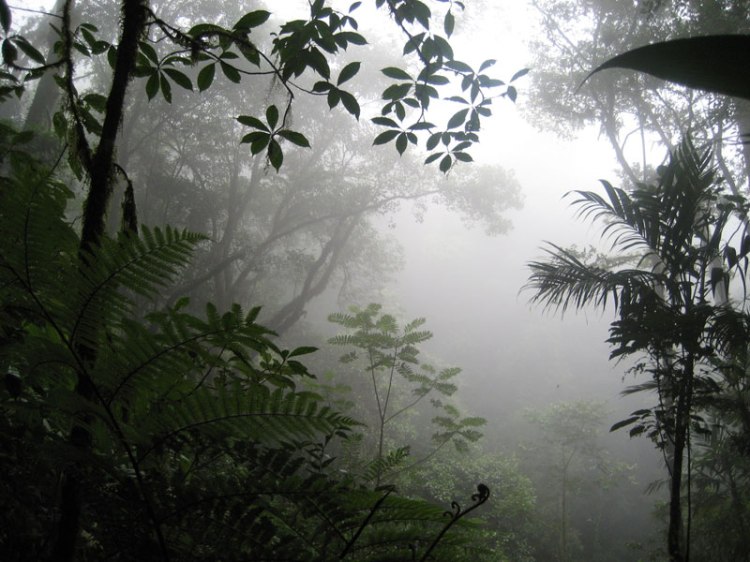
A cloud forest, also called a fog forest, is a generally tropical or subtropical, evergreen,montane, moist forest characterized by a persistent, frequent or seasonal low-level cloud cover, usually at the canopy level. Cloud forests often exhibit an abundance of mosses covering the ground and vegetation, in which case they are also referred to as mossy forests. Mossy forests usually develop on the saddles of mountains, where moisture introduced by settling clouds is more effectively retained.
In comparison with lower tropical moist forests, cloud forests show a reduced tree stature combined with increased stem density and generally the lower diversity of woody plants. Trees in these regions are generally shorter and more heavily stemmed than in lower-altitude forests in the same regions, often with gnarled trunks and branches, forming dense, compact crowns. Their leaves become smaller, thicker and harder with increasing altitude.The high moisture promotes the development of a high biomass and biodiversity of epiphyte, particularly bryophytes, lichens, ferns https://en.m.wikipedia.org/wiki/Cloud_forest(including filmy ferns), bromeliads and orchids.The number of endemic plants can be very high.
An important feature of cloud forests is the tree crowns can intercept the wind-driven cloud moisture, part of which drips to the ground. This fog drip occurs when water droplets from the fog adhere to the needles or leaves of trees or other objects, coalesce into larger drops and then drop to the ground. It can be an important contribution to the hydrologic cycle.
Due to the high water content of the soil, the reduced solar radiation and the low rates of decomposition and mineralization, the soil acidity is very high, with more humus and peat often forming the upper soil layer.
Stadtmüller (1987) distinguishes two general types of tropical montane cloud forests:
- Areas with a high annual precipitation due to a frequent cloud cover in combination with heavy and sometimes persistent orographic rainfall; such forests have a perceptible canopy strata, a high number of epiphytes, and a thick peat layer which has a high storage capacity for water and controls the runoff;
- In drier areas with mainly seasonal rainfall, cloud stripping can amount to a large proportion of the moisture available to plants.
-
- Watershed function: Because of the cloud-stripping strategy, the effective rainfall can be doubled in dry seasons and increase the wet season rainfall by about 10%. Experiments of Costin and Wimbush (1961) showed that the tree canopies of non-cloud forests intercept and evaporate 20 percent more of the precipitation than cloud forests, which means a loss to the land component of the hydrological cycle.
- Vegetation: Tropical montane cloud forests are not as species-rich as tropical lowland forests, but they provide the habitats for many species found nowhere else. For example, the Cerro de la Neblina, a cloud-covered mountain in the south of Venezuela, accommodates many shrubs, orchids, and insectivorous plants which are restricted to this mountain only.
- Fauna: The endemism in animals is also very high. In Peru, more than one-third of the 270 endemic birds, mammals, and frogs are found in cloud forests. One of the best-known cloud forest mammals is the mountain gorilla (Gorilla b. beringei). Many of those endemic animals have important functions, such as seed dispersal and forest dynamics in these ecosystems.
Check the video